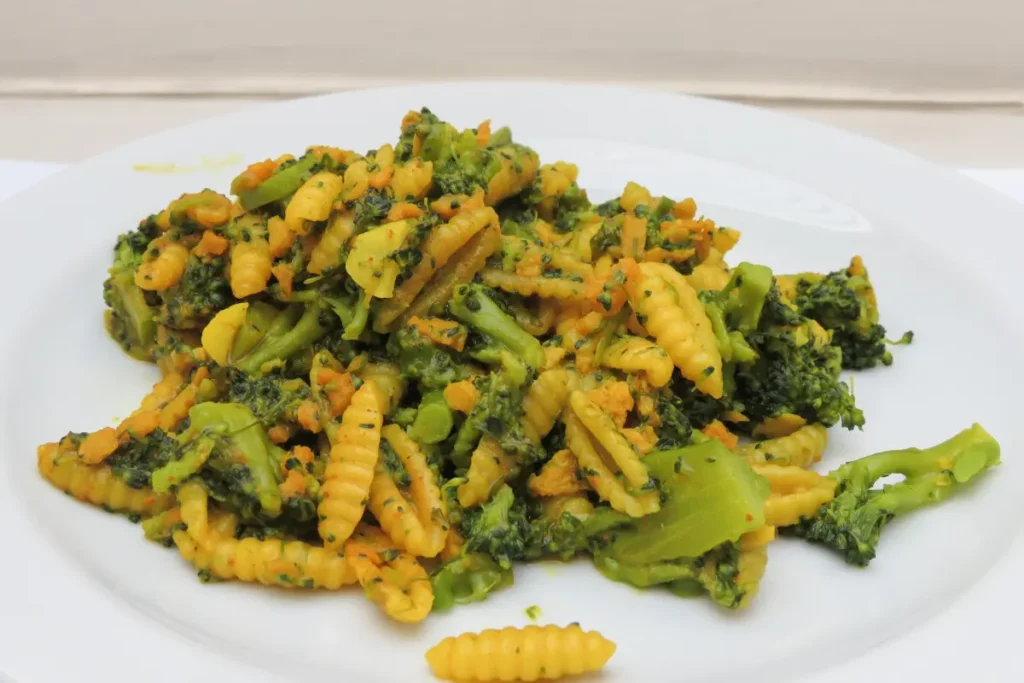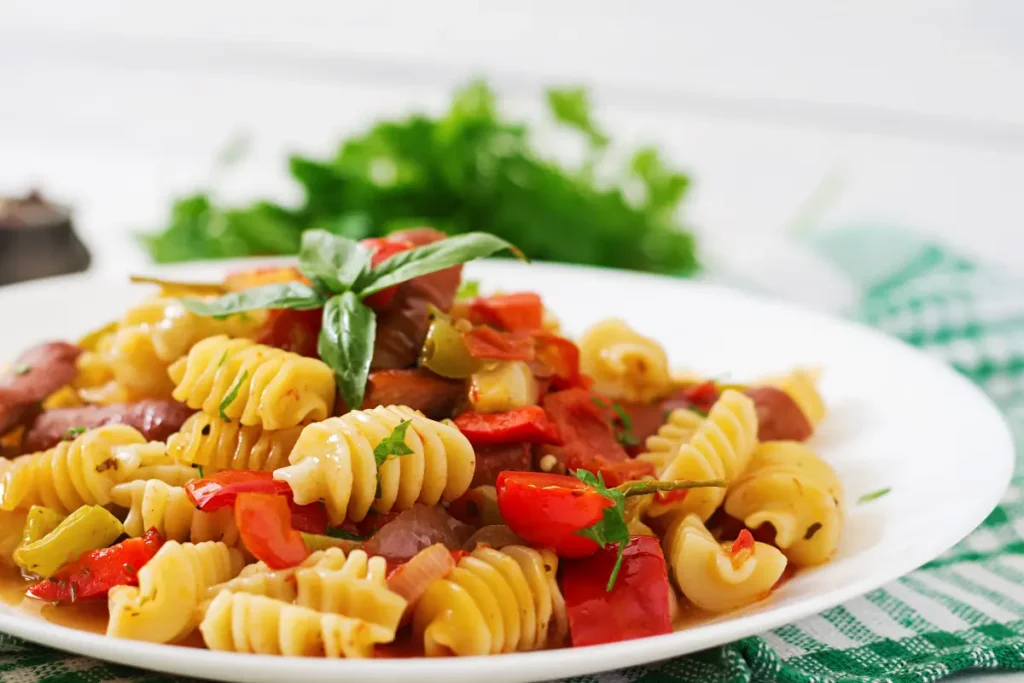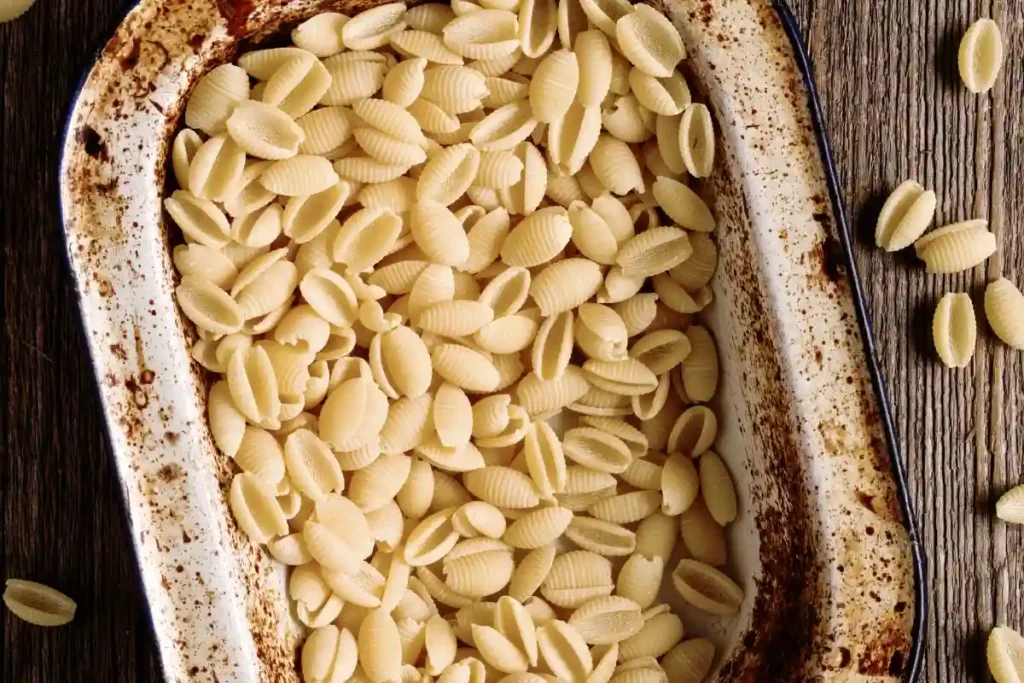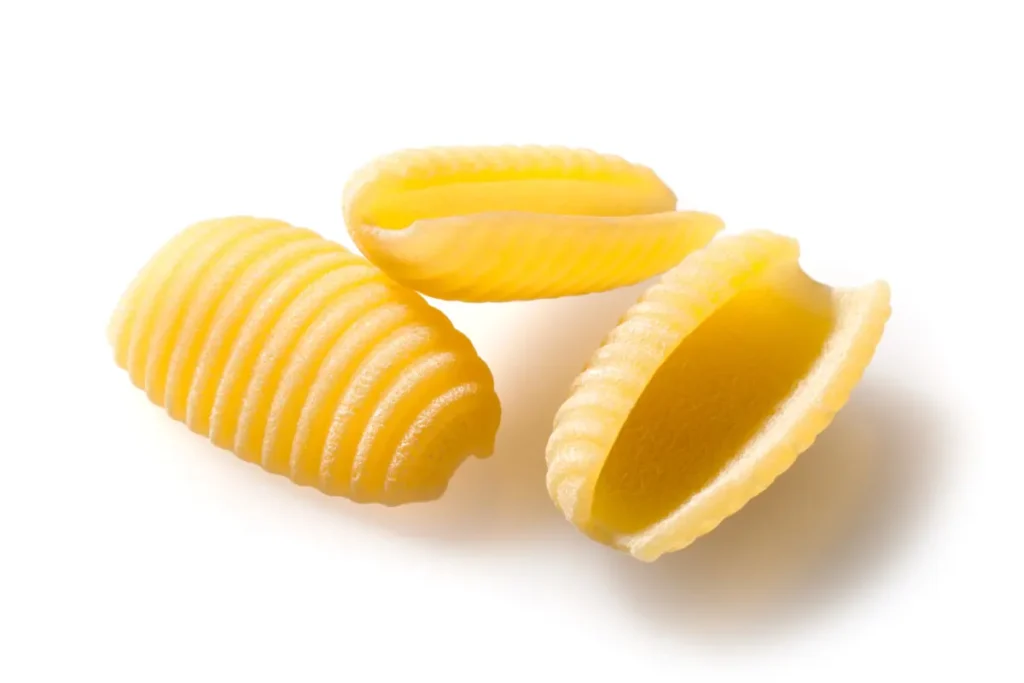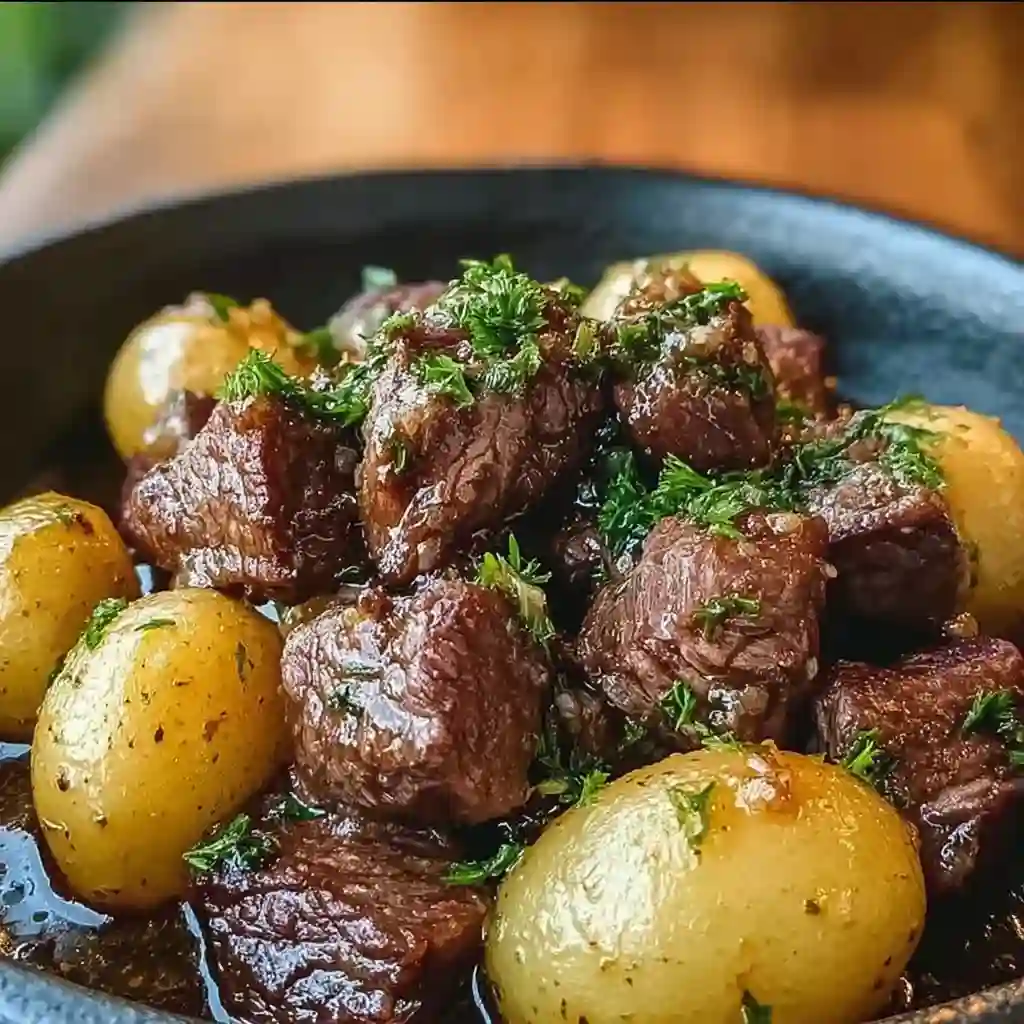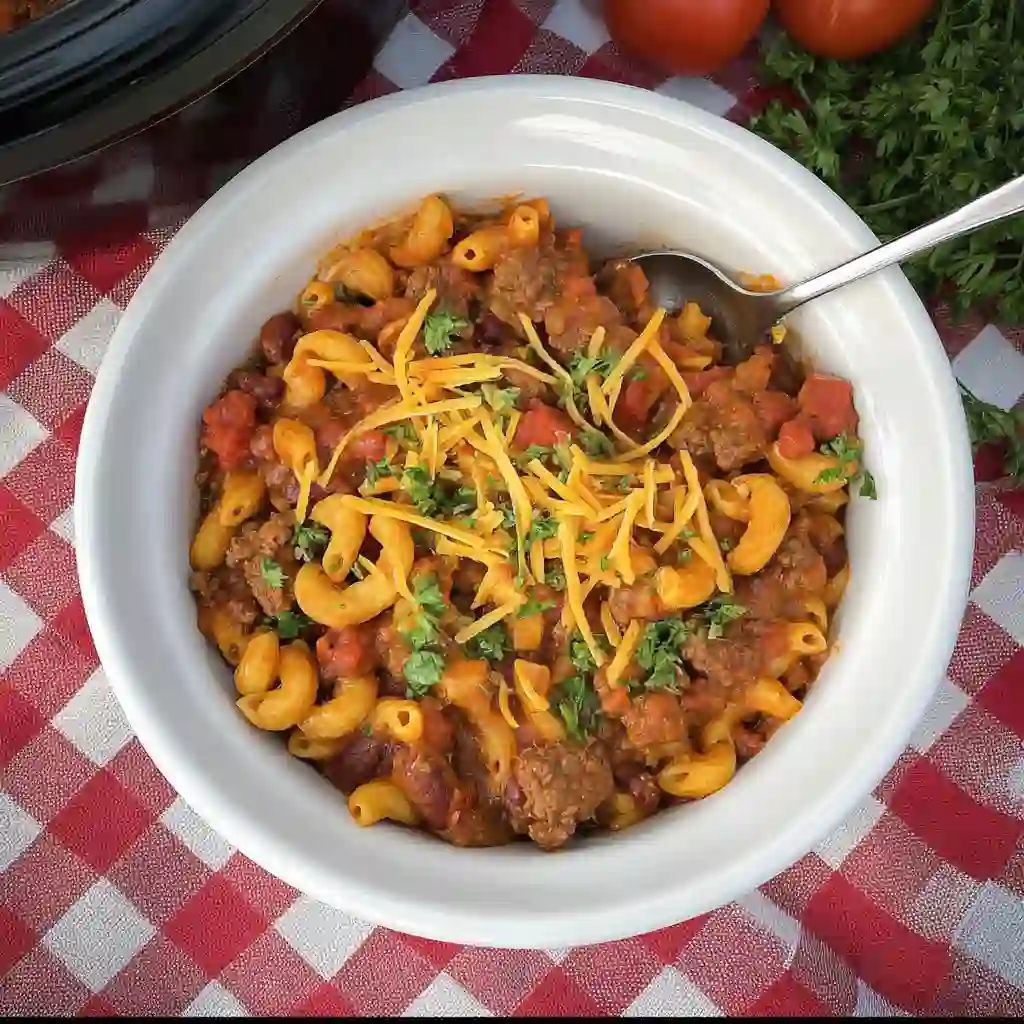In Italian cuisine, gnocchi and gnocchetti are two popular pasta variations that often cause confusion due to their similar names. However, these delightful dumplings have distinct characteristics that set them apart from each other. In this article, we will explore the key differences between gnocchi and gnocchetti, including their shape, texture, and size, helping you understand how they differ.
Key Takeaways:
- Gnocchi and gnocchetti are both beloved Italian pasta variations.
- Gnocchi are larger and tend to be softer, while gnocchetti are smaller and denser.
- The shape, texture, and size of gnocchi and gnocchetti contribute to their unique eating experience.
- Understanding the differences between gnocchi and gnocchetti can help you appreciate their nuances.
- Both gnocchi and gnocchetti can be paired with a variety of sauces and accompaniments to enhance their flavor.
The Basics of Gnocchi and Gnocchetti
In Italian cuisine, both gnocchi and gnocchetti are beloved potato-based pasta variations. While they share similarities, they also have distinct characteristics that set them apart. In this section, we’ll provide an overview of both gnocchi and gnocchetti, exploring their origins, preparation methods, and variations. For a deeper dive into the world of gnocchetti, explore this culinary journey through Italy.
What are Gnocchi and Gnocchetti?
Gnocchi are soft and pillowy potato dumplings that are typically made with potatoes, flour, and sometimes eggs. These traditional Italian potato dumplings have a rich history dating back several centuries. On the other hand, gnocchetti are smaller, denser pasta shapes that resemble tiny dumplings. They are made using the same ingredients as gnocchi but are different in shape and texture, Discover more about what goes into making gnocchetti here.
Traditional vs Modern Preparation
Both gnocchi and gnocchetti have traditional recipes that have been passed down through generations. However, modern variations have also emerged, incorporating different ingredients and flavors to add a contemporary twist to these classic dishes. While traditional gnocchi are made using mainly potatoes, flour, and eggs, modern versions may include ingredients such as spinach, pumpkin, or herbs.
Gnocchi Types
Over time, gnocchi have evolved into various types, each with its own unique characteristics. Some popular variations include:
- Gnocchi di Patate: Classic potato gnocchi made with flour and eggs.
- Gnocchi alla Romana: Semolina-based gnocchi typically baked in the oven.
- Gnocchi di Zucca: Pumpkin gnocchi, often enjoyed during the fall season.
- Gnocchi alla Sorrentina: Gnocchi served with tomato sauce, mozzarella, and basil.
These different types of gnocchi offer a range of flavors and textures, adding to the versatility of this beloved Italian dish.
Shape and Texture Differences
When it comes to gnocchi and gnocchetti, the differences in shape and texture play a significant role in defining their culinary experience. Let’s take a closer look at these characteristics:
1. Shape:
Gnocchi, commonly known as potato dumplings, are traditionally elongated and cylindrical in shape. Their larger size and ridged exterior provide a visually appealing presentation on the plate.
Gnocchetti, on the other hand, are smaller and have a unique shell-like shape. Their curved and textured surface allows them to hold onto sauces more effectively, ensuring a burst of flavors in every bite.
2. Texture:
Gnocchi are renowned for their soft and pillowy texture. Made primarily with potato, they melt in your mouth, delivering a delightful and comforting experience. The delicate texture of gnocchi allows them to absorb flavors from sauces and other ingredients, enhancing the overall taste.
Conversely, gnocchetti have a denser texture due to their smaller size and shape. They offer a more substantial bite, providing a satisfying chewiness that complements robust sauces and hearty ingredients.
Despite their differing shapes and textures, both gnocchi and gnocchetti offer a delightful eating experience. Whether you prefer the lightness and tenderness of gnocchi or the hearty and chewy nature of gnocchetti, these pasta variations are sure to satisfy your palate.
Comparison Table:
| Gnocchi | Gnocchetti |
|---|---|
| Shape: Elongated and cylindrical | Shape: Shell-like |
| Texture: Soft and pillowy | Texture: Denser and chewy |
Size Matters: Gnocchi vs Gnocchetti
In the world of pasta, size does matter. Gnocchi and gnocchetti may sound similar, but they have distinct size differences that contribute to their unique eating experiences. Let’s explore the variations in size between these two pasta varieties.
The Standard Sizes
Gnocchi, traditionally made with potato and flour, are typically larger and more pillowy in texture. They are shaped into small oval dumplings, usually measuring around 2-3 centimeters in length. The larger size of gnocchi allows for a fluffy interior that pairs well with rich and hearty sauces.
On the other hand, gnocchetti, also known as gnocchetti sardi or malloreddus, are smaller and denser. These pasta shapes resemble small shells or dumplings with ridges, measuring only about 1 centimeter in length. The miniature size of gnocchetti allows them to hold onto sauces and flavors more effectively, resulting in a delightful burst of taste in every bite.
Regional Variations
Italy is known for its diverse regional cuisines, and gnocchi and gnocchetti are no exception. Different parts of Italy have their own variations in size, further adding to the culinary mosaic of these pasta delights.
For example, in Northern Italy, particularly in Lombardy and Piedmont, you’ll find larger-sized gnocchi. These regional variations are often made with variations in ingredients, such as spinach, pumpkin, or ricotta, adding an extra layer of flavor to the pasta.
In regions like Sardinia and Sicily, where gnocchetti are popular, you’ll encounter the smaller-sized pasta, cooked to perfection with regional sauces like tomato-based ragù or saffron-infused seafood dishes.
Homemade vs Store-Bought
When it comes to the size of gnocchi and gnocchetti, there is also a difference between homemade and store-bought options. Homemade pasta often allows for greater control over the size and shape, as it can be tailored to personal preferences.
Store-bought gnocchi and gnocchetti tend to be more standardized in size, ensuring consistent cooking times and results. However, they may not have the same artisanal feel as their homemade counterparts. Whether you prefer the convenience of store-bought or the charm of homemade, both options offer a delicious taste experience.
| Gnocchi | Gnocchetti |
|---|---|
| Standard Size: 2-3 cm in length | Standard Size: 1 cm in length |
| Pillowy and fluffy texture | Small and dense texture |
| Popular in Northern Italy | Popular in Sardinia and Sicily |
| Variations with different ingredients | Traditionally made with semolina flour |
| Homemade or store-bought options available | Homemade or store-bought options available |
Flavor Profiles and Sauces: Gnocchi vs Gnocchetti
When it comes to the flavor profiles of gnocchi and gnocchetti, their ingredients play a crucial role. Both pasta varieties have distinct ingredients that contribute to their unique tastes.
Gnocchi are typically made with potatoes, flour, egg, and salt. The combination of starchy potatoes and flour results in a delicate and earthy flavor. The addition of egg helps to bind the ingredients together, giving the gnocchi a slightly richer taste. This traditional recipe creates soft and pillowy dumplings that are a delight to savor.
Gnocchetti, on the other hand, have a firmer texture and a slightly different taste due to their different ingredients. They are made with semolina flour, water, and sometimes eggs. Semolina flour lends a slightly nutty and hearty flavor to the pasta, giving gnocchetti their own unique profile. The absence of potatoes in the dough results in a denser texture.
Now, let’s explore some of the sauces and accompaniments that pair well with each pasta variety:
- For gnocchi, classic Italian sauces like tomato-based marinara, creamy alfredo, or rich Bolognese work wonderfully. The soft and delicate texture of gnocchi absorbs the flavors of these sauces, creating a harmonious balance of taste and texture.
- Gnocchetti, with their firmer texture, are better suited for heartier sauces that can cling to their ridges and crevices. Try pairing gnocchetti with robust meat ragu, chunky vegetable sauces, or a simple garlic and olive oil dressing to highlight their nutty flavor.
It’s worth noting that both gnocchi and gnocchetti can be enjoyed with a variety of sauces and ingredients, so feel free to experiment and get creative in your culinary adventures.
Conclusion
In conclusion, gnocchi and gnocchetti are both beloved Italian pasta variations, each with its own unique characteristics. While gnocchi are larger and tend to be softer, gnocchetti are smaller and denser. Understanding the differences in shape, texture, size, and flavors will help you appreciate the nuances of these culinary delights.
Whether you’re enjoying a classic potato gnocchi or experimenting with gnocchetti made from alternative ingredients, both offer a delightful experience in Italian cuisine. Gnocchi, with their pillowy texture, are perfect for soaking up rich, flavorful sauces, while the smaller size of gnocchetti makes them ideal for light, delicate sauces that cling to their nooks and crannies.
So, the next time you’re searching for a comforting Italian meal, consider trying both gnocchi and gnocchetti. Their contrasting characteristics ensure a diverse range of eating experiences, allowing you to explore the wide world of Italian pasta in all its delicious forms.
FAQ
What is the difference between gnocchi and gnocchetti?
Gnocchi and gnocchetti are both Italian pasta variations, but they differ in shape, size, and texture. Gnocchi are larger and have a soft, pillowy texture, while gnocchetti are smaller and denser.
What are gnocchi and gnocchetti made of?
Both gnocchi and gnocchetti are typically made from potatoes, flour, and sometimes eggs. However, variations of gnocchi can be made with other ingredients like ricotta cheese or spinach.
Can I make gnocchi and gnocchetti at home?
Yes, you can make both gnocchi and gnocchetti at home. Recipes for homemade gnocchi and gnocchetti are widely available, and making them from scratch allows you to customize the flavors and textures according to your preferences.
Are there store-bought options available for gnocchi and gnocchetti?
Yes, you can find store-bought gnocchi and gnocchetti in many grocery stores. While they may not offer the same level of customization as homemade versions, they provide a convenient and time-saving option for quick meals.
What sauces go well with gnocchi and gnocchetti?
Both gnocchi and gnocchetti can be paired with a variety of sauces. Traditional options include tomato sauce, pesto, and butter with sage. However, you can also experiment with creamy sauces or meat-based ragù to create different flavor profiles.
Can gnocchi and gnocchetti be used in the same recipes?
Yes, gnocchi and gnocchetti can often be used interchangeably in recipes. However, due to their size and texture differences, they may slightly alter the overall taste and texture of the dish. It’s best to consider the specific characteristics of each pasta when deciding which one to use in a recipe.
Is gnocchi the same as gnocchetti?
No, gnocchi and gnocchetti are not the same. While both are Italian pasta varieties, gnocchi is typically larger and plumper, often made with a base of potato, flour, and eggs. Gnocchetti, on the other hand, is smaller and might have a different shape or texture. The two are used in various dishes, offering distinct culinary experiences.
What are the three types of gnocchi?
The three common types of gnocchi are:
- Potato Gnocchi: The most classic form, made with mashed potatoes, flour, and eggs.
- Ricotta Gnocchi: A lighter variant that uses ricotta cheese instead of potatoes, combined with flour and sometimes eggs.
- Semolina Gnocchi (Gnocchi alla Romana): Made with semolina flour, milk, butter, and cheese, these are baked and have a different texture and shape compared to the traditional gnocchi.
What is a substitute for gnocchetti pasta?
If you can’t find gnocchetti, you can substitute it with other small pasta shapes that will hold sauce well. Options include orecchiette, cavatelli, or even the slightly larger gnocchi. The goal is to choose a pasta that complements the sauce and other ingredients in your dish.
s there a difference between gnocchi and potato gnocchi?
Yes, there is a difference. While the term “gnocchi” can refer to various dumpling-like pasta, including those made with ricotta or semolina, “potato gnocchi” specifically refers to gnocchi made with a base of potato. Potato gnocchi is the most widely recognized and traditional form, known for its soft, pillowy texture.

